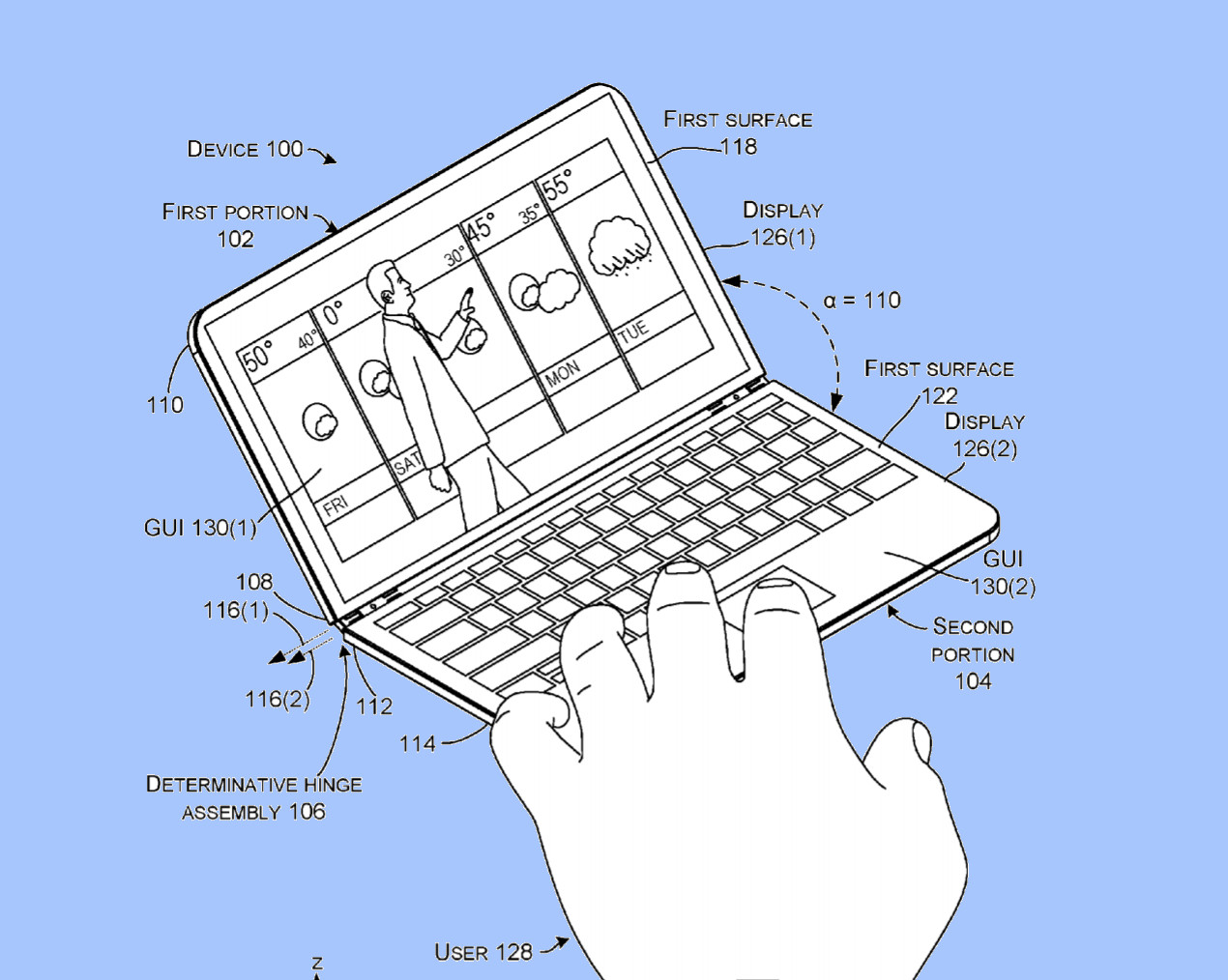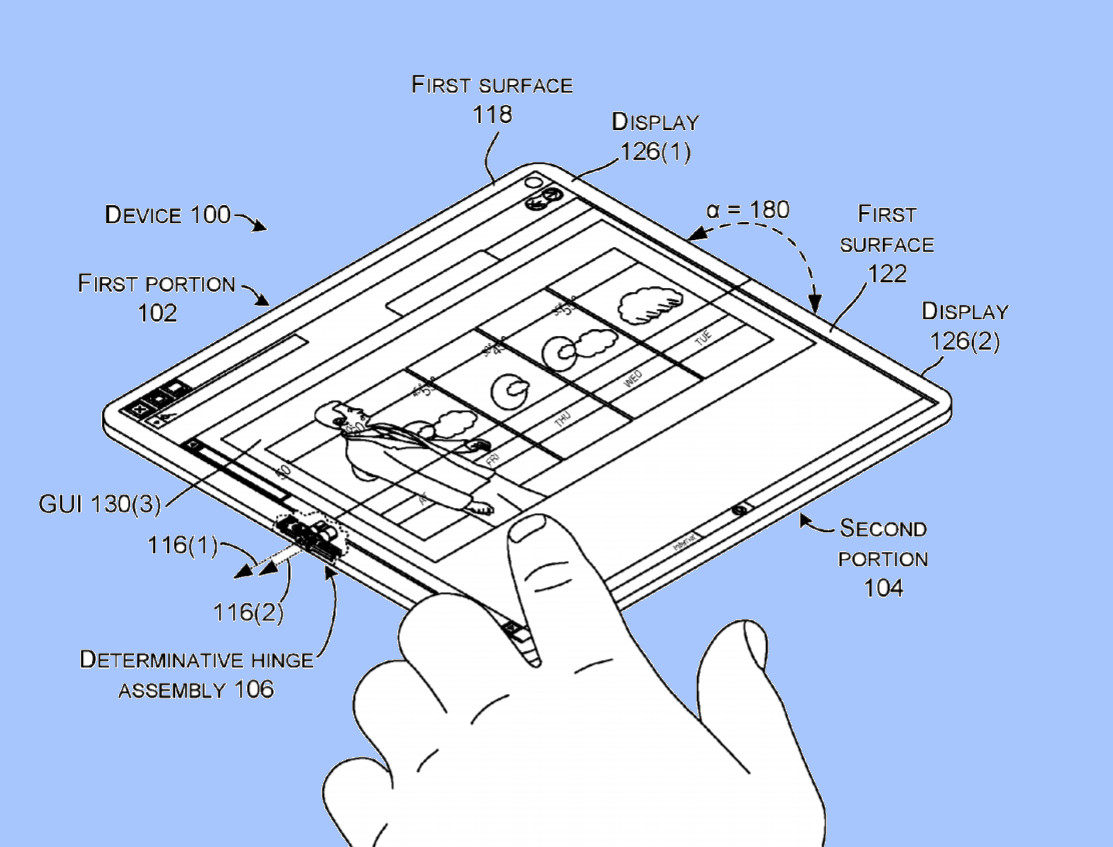New Surface Phone patent shows it turning into a mini-laptop via "determinative hinge"
3 min. read
Published on
Read our disclosure page to find out how can you help MSPoweruser sustain the editorial team Read more

Microsoft’s Project Andromeda “Surface Phone” is often portrayed as a hybrid phone/tablet, but a new patent by Microsoft for a “hinged device” suggests the Windows 10-powered handset may offer a bit more, including functioning as a mini-laptop.
The patent, which is all about a new type of “Determinative hinge” shows the device as a mini-laptop above, complete with a keyboard and trackpad displayed on the second screen, and also as a tablet when fully opened.
The patent is all about the hinge, which features a notch on one of its surfaces which creates a stable point at 135 degrees which allow the device to maintain a traditional clamshell laptop configuration without flopping around, but that would also be able to open fully when pushed further.
The hinge also has other advantages, probably best appreciated by hinge nerds, with Microsoft noting:
The present concepts relate to devices, such as computing devices employing determinative hinge assemblies that can rotationally secure first and second device portions relative to a first hinge axis that relates to the first portion and a second hinge axis that relates to the second portion. The determinative hinge assembly can define which angles of rotation occur relative to which hinge axis. For instance, 0 to 90 degree rotation may occur around one of the hinge axes, 91-270 degrees may occur around the other hinge axis, and 271 to 360 may occur around the former hinge axis, for example. Traditionally, at certain angles of rotation, the first and second portions might contact one another. This contact can damage elements of either or both of the first and second portions. The determinative hinge assembly can solve this issue by allowing the first and second portions to move away from one another during this contact to lessen forces imparted on the first and second portions (e.g., the determinative hinge assembly can function as the compliant member in the system). The determinative hinge assembly can accomplish this movement with a force-relief sub-assembly. The force-relief sub-assembly can flex in a manner that allows the first and second portions to move slightly away from one another proximate to the hinge axis during contact and to return when contact ceases.
Of note is that the patent was filed in September 2016, suggesting once again that at least the project was still alive then. That is, of course, no guarantee that is still the case.
Microsoft’s “Surface Phone” is expected to run C-shell, a new adaptable Windows 10 shell that can function on phones and tablets, and may possibly support Win32 applications from the store at a later date.
As a mini-laptop, the handset may appeal more to business users looking to be hypermobile and also work on the go, which would fit with Microsoft’s productivity ethos. Hopefully, this is one patent which will actually result in a successful Microsoft product. It can be seen in full here.
Via Walkingcat










User forum
0 messages